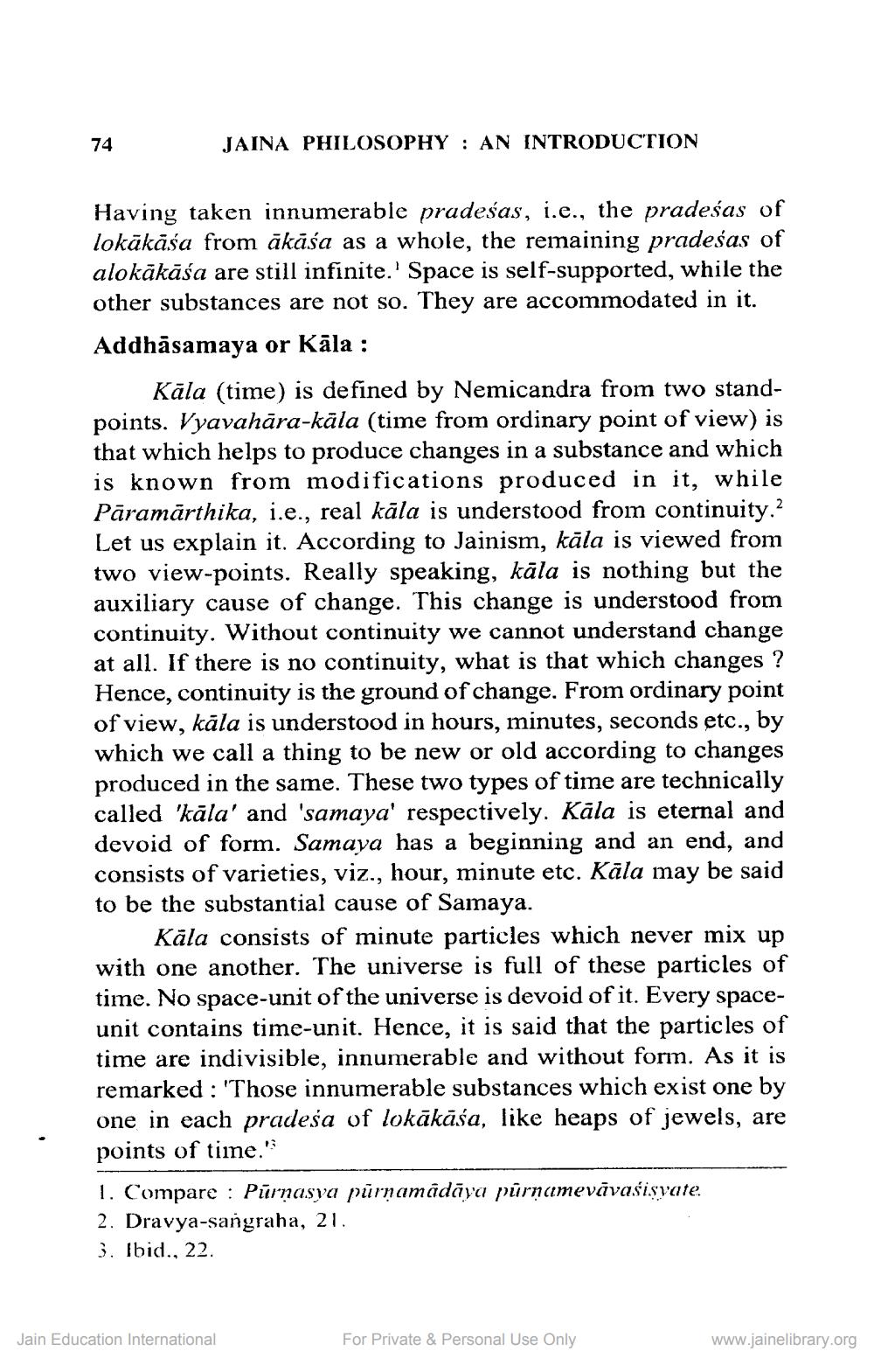________________
74
JAINA PHILOSOPHY: AN INTRODUCTION
Having taken innumerable pradeśas, i.e., the pradeśas of lokākāśa from ākāśa as a whole, the remaining pradeśas of alokākāśa are still infinite.' Space is self-supported, while the other substances are not so. They are accommodated in it. Addhāsamaya or Kāla :
Kāla (time) is defined by Nemicandra from two standpoints. Vyavahāra-kāla (time from ordinary point of view) is that which helps to produce changes in a substance and which is known from modifications produced in it, while Pāramärthika, i.e., real kala is understood from continuity.2 Let us explain it. According to Jainism, kāla viewed from two view-points. Really speaking, kāla is nothing but the auxiliary cause of change. This change is understood from continuity. Without continuity we cannot understand change at all. If there is no continuity, what is that which changes? Hence, continuity is the ground of change. From ordinary point of view, kāla is understood in hours, minutes, seconds etc., by which we call a thing to be new or old according to changes produced in the same. These two types of time are technically called 'kāla' and 'samaya' respectively. Kala is eternal and devoid of form. Samaya has a beginning and an end, and consists of varieties, viz., hour, minute etc. Kāla may be said to be the substantial cause of Samaya.
Kāla consists of minute particles which never mix up with one another. The universe is full of these particles of time. No space-unit of the universe is devoid of it. Every spaceunit contains time-unit. Hence, it is said that the particles of time are indivisible, innumerable and without form. As it is remarked: 'Those innumerable substances which exist one by one in each pradesa of lokākāśa, like heaps of jewels, are points of time."
1. Compare: Purnasya purṇamādāya pūrṇamevāvaṣiṣyate. 2. Dravya-sangraha, 21.
3. Ibid., 22.
Jain Education International
For Private & Personal Use Only
www.jainelibrary.org




